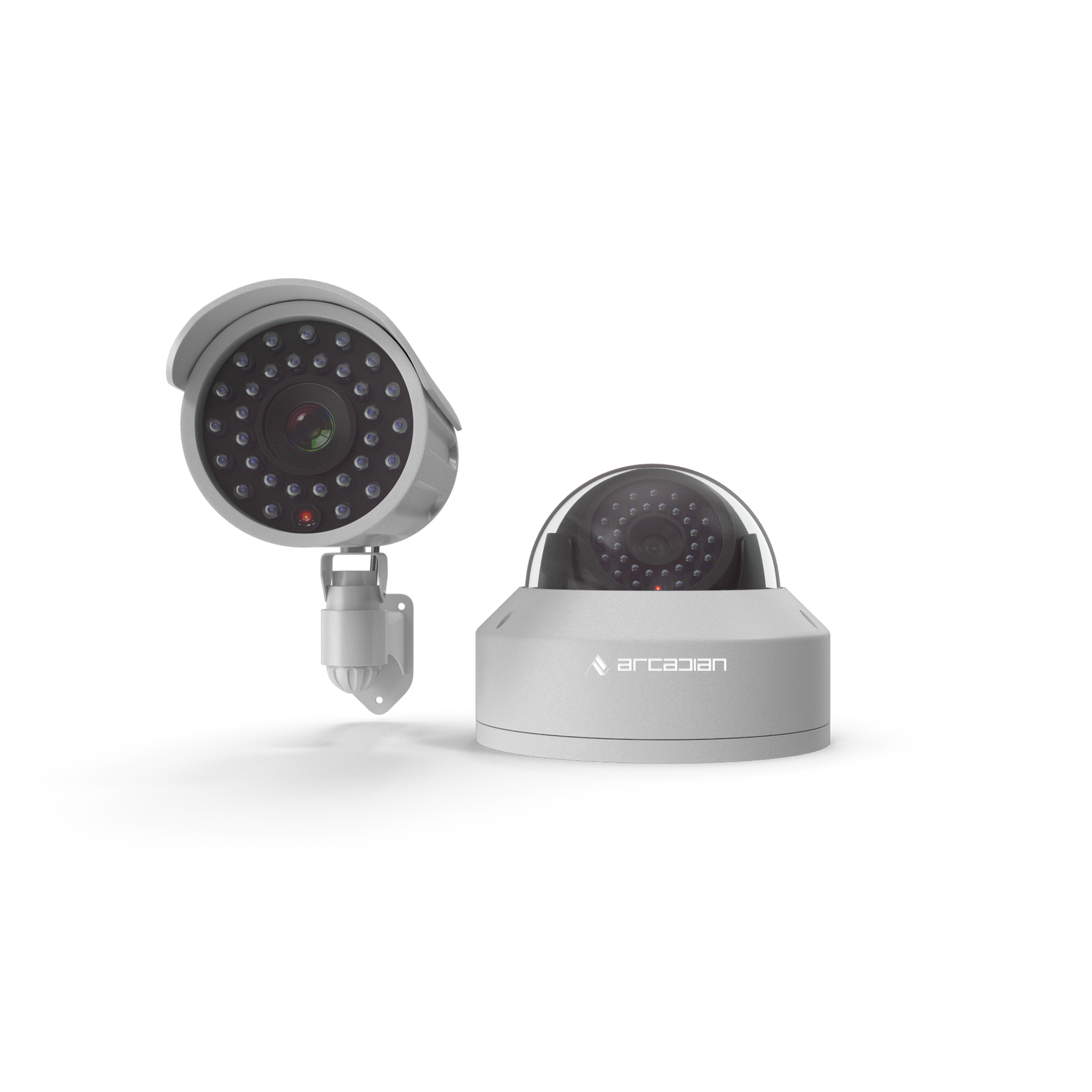Security Fatigue: The Hidden Cost of Ignoring Protection Until It’s Too Late
From ignored CCTV alerts to data breaches caused by password reuse, security fatigue costs billions each year. This post explores the financial, emotional, and human side of security burnout—and why businesses can’t afford to wait until after an incident to act.

Introduction
Security systems aren’t failing because technology isn’t available—they’re failing because people are tired. Security fatigue, a term popularized by the U.S. National Institute of Standards and Technology (NIST), refers to the exhaustion individuals feel when confronted with constant alerts, warnings, and requirements.
In cyber, it looks like ignored MFA prompts or reused passwords. In physical security, it’s operators clicking past hundreds of false alarms or guards zoning out while scanning CCTV feeds.
The results are catastrophic. According to IBM’s Cost of a Data Breach Report 2024, the average global breach costs $4.88 million, and human error is involved in 95% of cases. The Security Industry Association (SIA) estimates that false alarms in physical security make up 94–98% of police dispatches, costing U.S. municipalities more than $1.8 billion annually.
Yet despite these figures, most businesses stay reactive—investing only after an incident strikes. This blog explores why security fatigue happens, its financial and emotional toll, the risk factors, and how solutions like ArcadianAI’s Ranger transform the equation.
Quick Summary / Key Takeaways
-
Security fatigue = burnout from constant alerts, warnings, and tasks.
-
Financial losses exceed billions annually from breaches and false alarms.
-
Emotional toll: anxiety, stress, disengagement, turnover.
-
Risk factors: overload, desensitization, optimism bias, poor design.
-
ArcadianAI’s Ranger reduces false alerts, keeping humans focused.
Background & Relevance
Security fatigue isn’t just a buzzword—it’s a documented phenomenon across industries.
-
NIST (2023): 60% of users report feeling fatigued by security warnings.
-
Urban Institute (2024): 94–98% of burglar alarms are false, costing police departments up to $2 billion yearly.
-
World Economic Forum (2024): Cybersecurity burnout ranked among the top 5 enterprise resilience risks.
The problem is both psychological and operational: human attention spans collapse under repetitive alerts, while legacy systems flood operators with noise.
Core Topic Exploration
What is Security Fatigue?
Security fatigue is the weariness or reluctance to engage in security tasks due to overload. It spans both cyber and physical domains:
-
Cyber: password fatigue, ignoring MFA, clicking through browser warnings.
-
Physical: false alarm desensitization, guards ignoring surveillance feeds, door security bypassed for convenience.
Psychology studies describe this as vigilance decrement: attention drops by as much as 45% after just 20 minutes of monitoring CCTV feeds (American Psychological Association, 2024).
The Financial Impact of Security Fatigue
Cybersecurity
-
IBM (2024): $4.88M = average cost of a data breach.
-
Verizon DBIR (2024): 74% of breaches involve the human element (errors, privilege misuse, social engineering).
-
Password reuse is rampant: Google’s 2023 study showed 65% of people reuse passwords across sites, a fatigue-driven behavior.
Physical Security
-
False alarms: Businesses may be charged $50–500 per false police dispatch. Across North America, false alarms cost $1.8B–$2B annually (Urban Institute).
-
Retail shrink: NRF 2024 report shows $94.5 billion in U.S. retail shrink, with fatigue-driven security lapses (e.g., ignored alerts) enabling organized retail crime.
-
Insurance premiums rise significantly after preventable incidents.
Hidden Costs
-
Productivity loss: Security interruptions waste an estimated 21 minutes per incident (Forrester, 2023).
-
Turnover: Security guard turnover exceeds 100% annually (ASIS, 2024), largely due to burnout.
The Emotional & Human Impact
Security fatigue isn’t just financial—it’s deeply personal.
-
Employee Stress: Constant alerts create anxiety. PwC (2024) found 42% of employees feel less engaged in organizations with high alert noise.
-
Burnout: Security analysts face an average tenure of just 2.5 years due to alert fatigue (Gartner, 2024).
-
Distrust: Customers lose confidence after breaches or visible lapses (e.g., unlocked doors, ignored alarms).
-
Mental Health: In healthcare, “alarm fatigue” contributes to nurse burnout and medical errors, showing how life-and-death the problem can be.
Why People Avoid Security Until It’s Too Late
-
Optimism Bias: “It won’t happen to me.”
-
Overload: Dozens of alerts daily → people stop caring.
-
Desensitization: Frequent warnings dull urgency.
-
Learned Helplessness: Belief that security breaches are inevitable.
-
Convenience Culture: People prop open doors or skip MFA because it feels faster.
This explains why investment only comes post-incident—a casino hit with ransomware spends millions on new controls after the fact, while ignoring them pre-incident.
Real Incidents Tied to Fatigue
-
MGM Resorts Ransomware (2023): Ignored MFA fatigue warnings led to a breach costing $100M.
-
Target ORC thefts (2024): Security staff failed to act on repeated alerts, enabling multimillion-dollar theft rings.
-
Dallas Police (2024): Reported 97% false alarms in burglar systems, draining resources and lowering response times.
-
Healthcare (ECRI Institute, 2024): Alarm fatigue cited as a top 10 patient safety concern; nurses missed real alerts amid false ones.

Comparisons & Use Cases
| Factor | Traditional Security (NVR, VMS, Guarding) | ArcadianAI + Ranger |
|---|---|---|
| False alarms | 90–98% of alerts are false | Smart filtering reduces false positives |
| Guard fatigue | High, vigilance drops in 20 min | AI handles noise, humans focus on action |
| Breach costs | $4.88M average | Lower with faster detection & response |
| Employee morale | Burnout, stress, disengagement | AI reduces fatigue, improves focus |
| ROI | Negative until post-incident | 30–40× ROI from prevention |
Competitors like Verkada, Genetec, Milestone, and Eagle Eye still flood operators with alerts, whereas ArcadianAI emphasizes precision over volume.
Common Questions (FAQ)
1. What is security fatigue in simple terms?
It’s when people get so tired of security alerts that they stop paying attention.
2. Why is it dangerous?
Because ignoring real threats leads to massive financial and safety consequences.
3. Does it only affect cybersecurity?
No, it happens in physical security too—false alarms, ignored cameras, and bypassed access controls.
4. How much does it cost businesses?
Billions yearly—$94.5B in U.S. retail shrink, $4.88M per cyber breach.
5. How does ArcadianAI help?
By filtering false alerts with AI so staff focus on real risks.
Conclusion & CTA
Security fatigue is the silent killer of resilience. It’s not laziness—it’s human psychology breaking down under flawed systems. The financial toll is massive, the emotional toll is corrosive, and the risk factors are multiplying as both cyber and physical threats rise.
Legacy systems—whether NVRs, VMS, or cloud competitors like Verkada, Genetec, Milestone, and Eagle Eye—keep feeding fatigue by overwhelming humans with noise.
ArcadianAI’s Ranger changes the model: fewer false alarms, more actionable insights, better ROI, and a workforce that trusts the system again.
👉 See ArcadianAI in Action → Get Demo – ArcadianAI
Security Glossary (2025 Edition)
Alarm Fatigue — Desensitization caused by frequent false alarms, leading to ignored alerts.
ArcadianAI Ranger — AI-powered virtual guard reducing false alarms and human fatigue.
Cybersecurity Fatigue — Mental exhaustion from repeated warnings and security demands.
False Alarm Rate — Percentage of alerts that are not true threats, often 90%+ in legacy systems.
Human Error — Mistakes or neglect by users, responsible for 95% of breaches.
MFA Fatigue — User resistance to multi-factor authentication prompts, exploited in cyberattacks.
NVR (Network Video Recorder) — Hardware for storing surveillance video, prone to false alerts.
Optimism Bias — The belief that “bad things won’t happen to me,” fueling complacency.
ORC (Organized Retail Crime) — Coordinated theft operations exploiting weak or fatigued security.
ROI (Return on Investment) — The financial benefit gained from investing in effective security.
Security Fatigue — Weariness leading to disengagement from security practices.
Surveillance Desensitization — When staff become numb to camera monitoring tasks, missing incidents.
VMS (Video Management System) — Software for managing video feeds, often prone to alert overload.
VSaaS (Video Surveillance as a Service) — Cloud-based video management, often criticized for high alert volumes.

Security is like insurance—until you need it, you don’t think about it.
But when something goes wrong? Break-ins, theft, liability claims—suddenly, it’s all you think about.
ArcadianAI upgrades your security to the AI era—no new hardware, no sky-high costs, just smart protection that works.
→ Stop security incidents before they happen
→ Cut security costs without cutting corners
→ Run your business without the worry
Because the best security isn’t reactive—it’s proactive.







